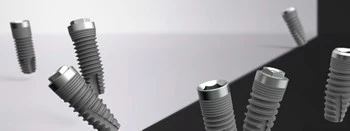science and technology
Ready to Use Titanium-Based Nanostructures for Dental Implants
Titanium alloys have excellent mechanical properties, corrosion resistance and biocompatibility, but their usage as dental implants is compromised by bacterial growth causing infection, inflammation and peri-implantitis. The infection process starts with the formation of bacterial biofilms, that is, bacteria accumulate over the implant’s surfaces and form a matrix of extracellular polymeric substances to protect themselves …
Continue reading “Ready to Use Titanium-Based Nanostructures for Dental Implants”
Is It Now the Era of Teledentistry?
Telehealth technologies have the potential to enhance oral health-care standards. Teledentistry can empower the communication between patients and dental professionals located in separate geographic regions. With this innovative technology, dental care can be provided to distant patients by real-time interaction using website monitoring, mobile apps and wearable devices. Dentists need to convert the traditional paper …
Navigation Implant Surgery
Image-guided dentistry has proven a cost-effective and easily applicable technology that adapts to several treatments. Currently, image-guided techniques are moving toward the so-called dynamic navigation which relies on CT, CBCT or MRI images to improve the accuracy of dental procedures. Dynamic navigation can help in restorative dentistry; for example, it allows to locate root canals in endodontic …
Boost Your Dental Career with Laser Therapy
Laser is one of the top innovative dental treatment options that were rigorously exploited over the past decade. Laser dentistry provides minimally invasive procedures and is thought to be the best choice for dealing with oral tissues. Popularity of laser dentistry has increased due to the great results it showed with excision of overgrown tissues; …
Continue reading “Boost Your Dental Career with Laser Therapy”
Nanotechnology in Dentistry: Orthodontics
The orthodontic applications of nanotechnology are numerous. Nanotechnology can assist in manufacturing orthodontic wires, brackets, orthodontic aligners and mini-/microimplants. Orthodontic wires coated with nanoparticles exhibited well-controlled tooth movements and better anchorage, with less frictional forces, less root resorption and less bone/periodontal damage. Orthodontic nanorobots and nanoindented orthodontic wires both contributed directly to healthy periodontal tissues, …
Continue reading “Nanotechnology in Dentistry: Orthodontics”
Which 3D Printer Should I Buy as A Dentist?
Buying a 3D printer can be a difficult decision for dental professionals with limited knowledge about 3D printing industry. This article will help to decide which 3D printer can be practical for dental usage. Answering this question has 3 major parts: 1. what is the need for 3D printer or what is the particular use …
Continue reading “Which 3D Printer Should I Buy as A Dentist?”






